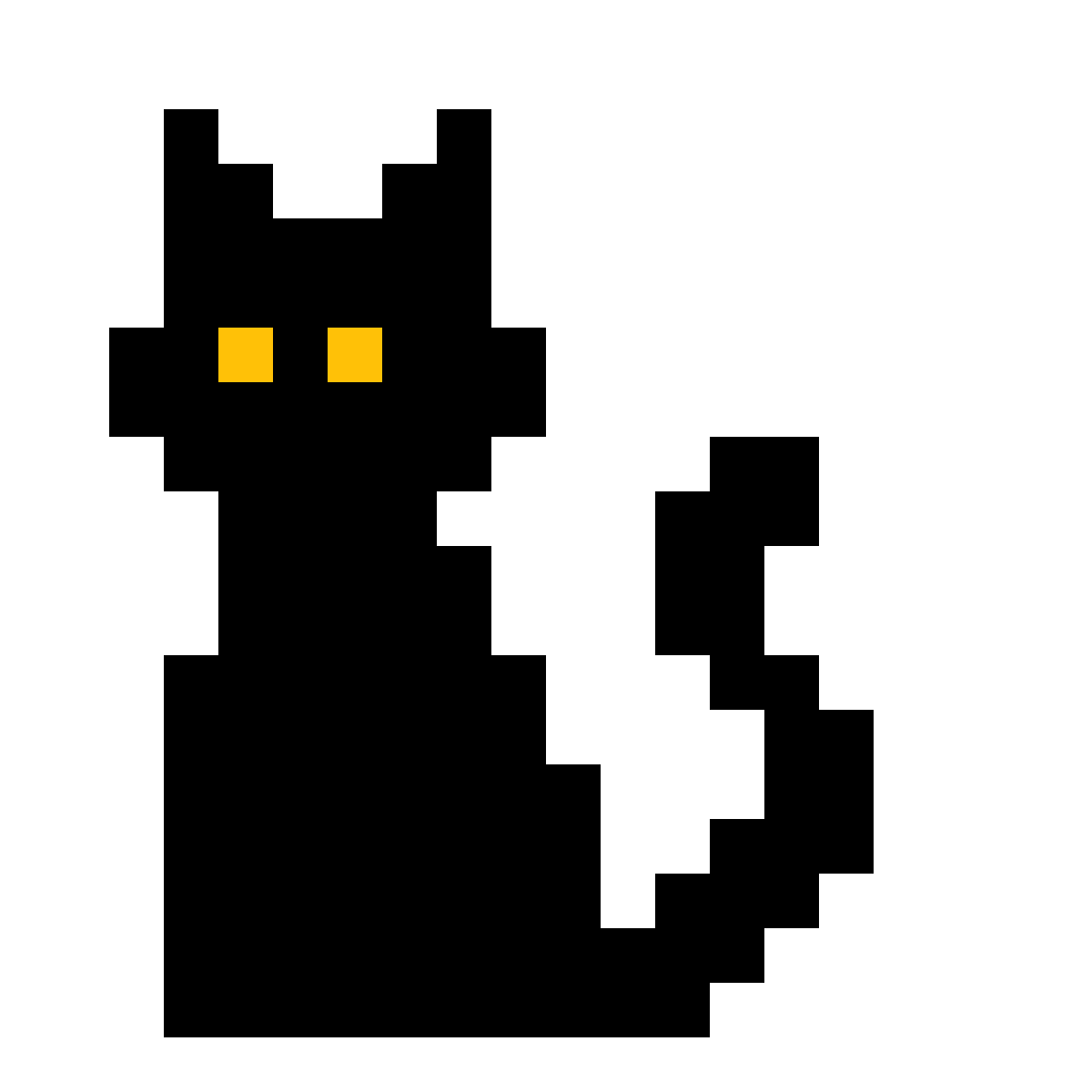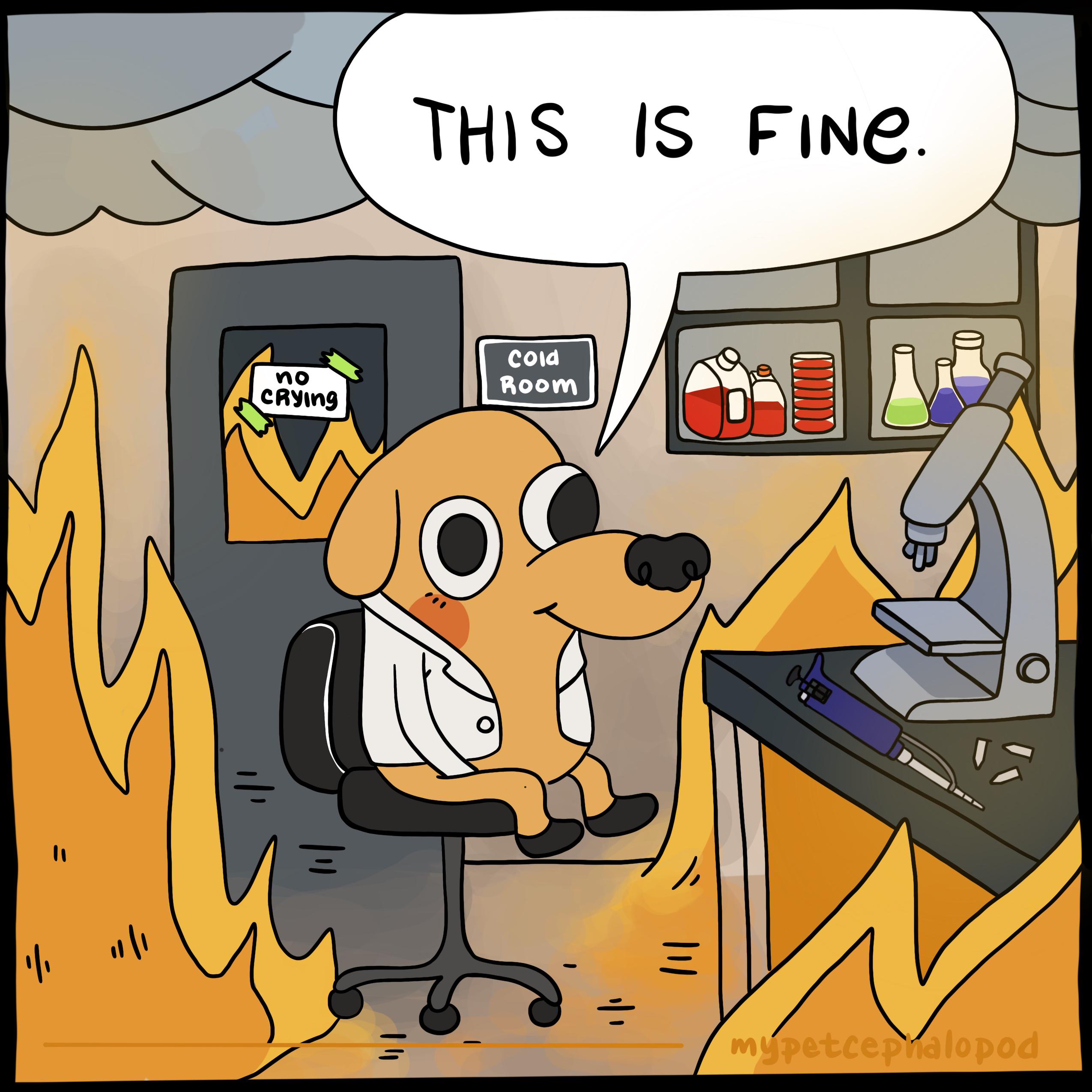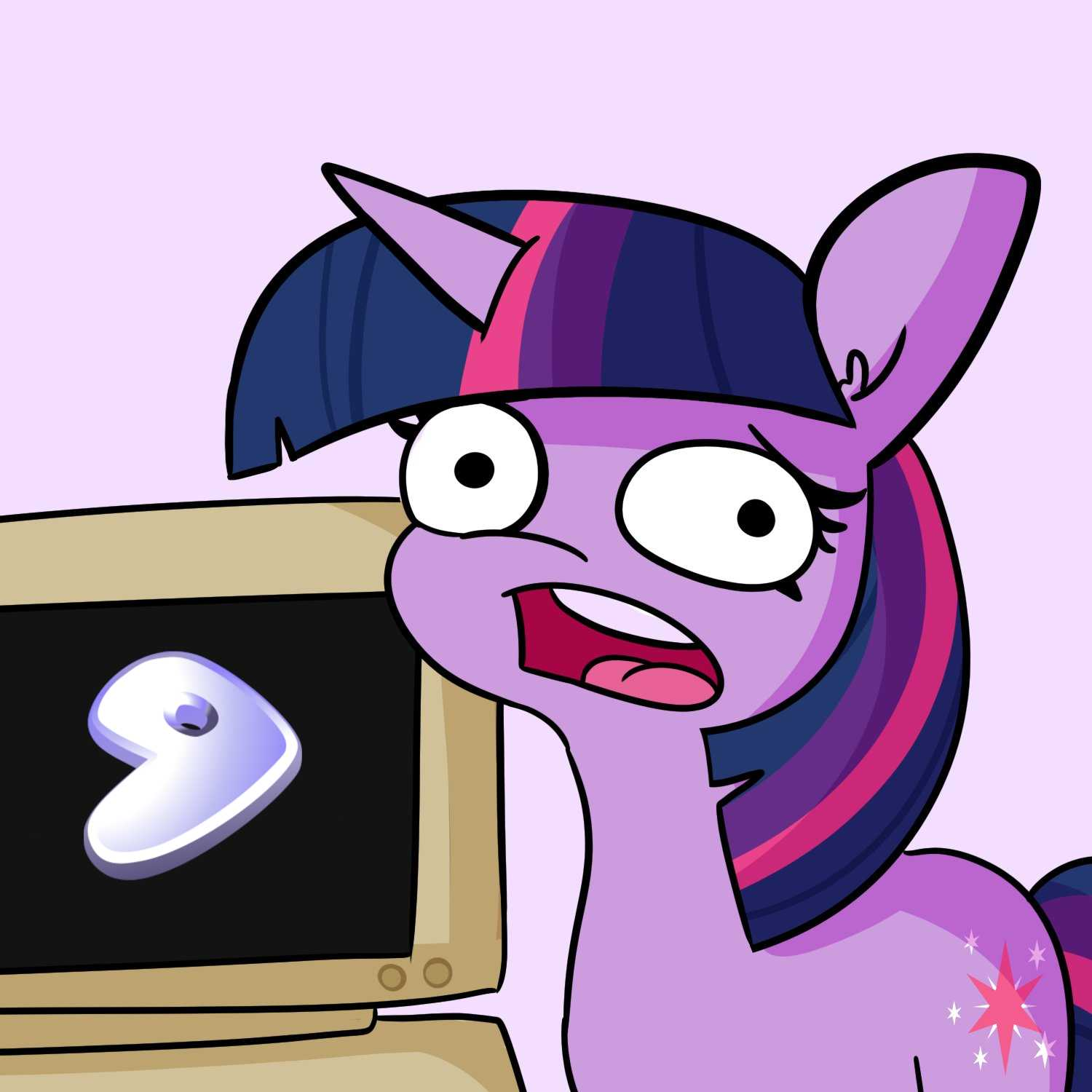x=.9999...
10x=9.9999...
Subtract x from both sides
9x=9
x=1
There it is, folks.
Unfortunately not an ideal proof.
It makes certain assumptions:
- That a number 0.999... exists and is well-defined
- That multiplication and subtraction for this number work as expected
Similarly, I could prove that the number which consists of infinite 9's to the left of the decimal separator is equal to -1:
...999.0 = x ...990.0 = 10x Calculate x - 10x: x - 10x = ...999.0 - ...990.0 -9x = 9 x = -1And while this is true for 10-adic numbers, it is certainly not true for the real numbers.
While I agree that my proof is blunt, yours doesn't prove that .999... is equal to -1. With your assumption, the infinite 9's behave like they're finite, adding the 0 to the end, and you forgot to move the decimal point in the beginning of the number when you multiplied by 10.
x=0.999...999
10x=9.999...990 assuming infinite decimals behave like finite ones.
Now x - 10x = 0.999...999 - 9.999...990
-9x = -9.000...009
x = 1.000...001
Thus, adding or subtracting the infinitesimal makes no difference, meaning it behaves like 0.
Edit: Having written all this I realised that you probably meant the infinitely large number consisting of only 9's, but with infinity you can't really prove anything like this. You can't have one infinite number being 10 times larger than another. It's like assuming division by 0 is well defined.
0a=0b, thus
a=b, meaning of course your ...999 can equal -1.
Edit again: what my proof shows is that even if you assume that .000...001≠0, doing regular algebra makes it behave like 0 anyway. Your proof shows that you can't to regular maths with infinite numbers, which wasn't in question. Infinity exists, the infinitesimal does not.
Yes, but similar flaws exist for your proof.
The algebraic proof that 0.999... = 1 must first prove why you can assign 0.999... to x.
My "proof" abuses algebraic notation like this - you cannot assign infinity to a variable. After that, regular algebraic rules become meaningless.
The proper proof would use the definition that the value of a limit approaching another value is exactly that value. For any epsilon > 0, 0.999.. will be within the epsilon environment of 1 (= the interval 1 ± epsilon), therefore 0.999... is 1.
The explanation I've seen is that ... is notation for something that can be otherwise represented as sums of infinite series.
In the case of 0.999..., it can be shown to converge toward 1 with the convergence rule for geometric series.
If |r| < 1, then:
ar + ar² + ar³ + ... = ar / (1 - r)
Thus:
0.999... = 9(1/10) + 9(1/10)² + 9(1/10)³ + ...
= 9(1/10) / (1 - 1/10)
= (9/10) / (9/10)
= 1
Just for fun, let's try 0.424242...
0.424242... = 42(1/100) + 42(1/100)² + 42(1/100)³
= 42(1/100) / (1 - 1/100)
= (42/100) / (99/100)
= 42/99
= 0.424242...
So there you go, nothing gained from that other than seeing that 0.999... is distinct from other known patterns of repeating numbers after the decimal point.
The explanation I've seen is that ... is notation for something that can be otherwise represented as sums of infinite series
The ellipsis notation generally refers to repetition of a pattern. Either ad infinitum, or up to some terminus. In this case we have a non-terminating decimal.
In the case of 0.999..., it can be shown to converge toward 1
0.999... is a real number, and not any object that can be said to converge. It is exactly 1.
So there you go, nothing gained from that other than seeing that 0.999... is distinct from other known patterns of repeating numbers after the decimal point
In what way is it distinct?
And what is a 'repeating number'? Did you mean 'repeating decimal'?The ellipsis notation generally refers to repetition of a pattern.
Ok. In mathematical notation/context, it is more specific, as I outlined.
This technicality is often brushed over or over simplified by math teachers and courses until or unless you take some more advanced courses.
Context matters, here's an example:
Generally, pdf denotes the file format specific to adobe reader, while in the context of many modern online videos/discussions, it has become a colloquialism to be able to discuss (accused or confirmed) pedophiles and be able to avoid censorship or demonetization.
0.999... is a real number, and not any object that can be said to converge. It is exactly 1.
Ok. Never said 0.999... is not a real number. Yep, it is exactly 1 because solving the equation it truly represents, a geometric series, results in 1. This solution is obtained using what is called the convergence theorem or rule, as I outlined.
In what way is it distinct?
0.424242... solved via the convergence theorem simply results in itself, as represented in mathematical nomenclature.
0.999... does not again result in 0.999..., but results to 1, a notably different representation that causes the entire discussion in this thread.
And what is a 'repeating number'? Did you mean 'repeating decimal'?
I meant what I said: "know patterns of repeating numbers after the decimal point."
Perhaps I should have also clarified known finite patterns to further emphasize the difference between rational and irrational numbers.
EDIT: You used a valid and even more mathematically esoteric method to demonstrate the same thing I demonstrated elsewhere in this thread, I have no idea why you are taking issue with what I've said.
Ok. In mathematical notation/context, it is more specific, as I outlined.
It is not. You will routinely find it used in cases where your explanation does not apply, such as to denote the contents of a matrix.
Furthermore, we can define real numbers without defining series. In such contexts, your explanation also doesn't work until we do defines series of rational numbers.
Ok. Never said 0.999... is not a real number
In which case it cannot converge to anything on account of it not being a function or any other things that can be said to converge.
because solving the equation it truly represents, a geometric series, results in 1
A series is not an equation.
This solution is obtained using what is called the convergence theorem
What theorem? I have never heard of 'the convergence theorem'.
0.424242... solved via the convergence theorem simply results in itself
What do you mean by 'solving' a real number?
0.999... does not again result in 0.999..., but results to 1
In what way does it not 'result in 0.999...' when 0.999... = 1?
You seem to not understand what decimals are, because while decimals (which are representations of real numbers) '0.999...' and '1' are different, they both refer to the same real number. We can use expressions '0.999...' and '1' interchangeably in the context of base 10. In other bases, we can easily also find similar pairs of digital representations that refer to the same numbers.
I meant what I said: "know patterns of repeating numbers after the decimal point."
What we have after the decimal point are digits. OTOH, sure, we can treat them as numbers, but still, this is not a common terminology. Furthermore, 'repeating number' is not a term in any sort of commonly-used terminology in this context.
The actual term that you were looking for is 'repeating decimal'.
Perhaps I should have also clarified known finite patterns to further emphasize the difference between rational and irrational numbers
No irrational number can be represented by a repeating decimal.
https://www2.kenyon.edu/Depts/Math/Paquin/GeomSeriesCalcB.pdf
Here's a standard introduction to the concept of the Convergence/Divergence Theorem of Geometric Series, starts on page 2.
Its quite common for this to be referred to as the convergence test or rule or theorem by teachers and TA's.
Now, ask yourself this question, 'is 0.999..., or any real number for that matter, a series?'. The answer to that question is 'no'.
You seem to be extremely confused, and think that the terms 'series' and 'the sum of a series' mean the same thing. They do not. 0.999... is the sum of the series 9/10+9/100+9/1000+..., and not a series itself.
EDIT: Also, the author does abuse the notations somewhat when she says '1+1/2+1/4 = 2' is a geometric series, as the geometric series 1+1/2+1/4+... does not equal 2, because a series is either just a formal sum, a sequence of its terms, or, in German math traditions, a sequence of its partial sums. It is the sum of the series 1+1/2+1/4+... that is equal to 2. The confusion is made worse by the fact that sums of series and the series themselves are often denoted in the same way. However, again, those are different things.
Would you mind providing a snippet with the definition of the term 'series' that she provides?EDIT 2: Notably, that document has no theorem that is called 'convergence theorem' or 'the convergence theorem'. The only theorem that is present there is the one on convergence and divergence of geometric series.
X=.5555...
10x=5.5555...
Subtract x from both sides.
9x=5
X=1 .5555 must equal 1.
There it isn't. Because that math is bullshit.
x = 5/9 is not 9/9. 5/9 = .55555...
You're proving that 0.555... equals 5/9 (which it does), not that it equals 1 (which it doesn't).
It's absolutely not the same result as x = 0.999... as you claim.
I thought the muscular guys were supposed to be right in these memes.
The decimals '0.999...' and '1' refer to the real numbers that are equivalence classes of Cauchy sequences of rational numbers (0.9, 0.99, 0.999,...) and (1, 1, 1,...) with respect to the relation R: (aRb) <=> (lim(a_n-b_n) as n->inf, where a_n and b_n are the nth elements of sequences a and b, respectively).
For a = (1, 1, 1,...) and b = (0.9, 0.99, 0.999,...) we have lim(a_n-b_n) as n->inf = lim(1-sum(9/10^k) for k from 1 to n) as n->inf = lim(1/10^n) as n->inf = 0. That means that (1, 1, 1,...)R(0.9, 0.99, 0.999,...), i.e. that these sequences belong to the same equivalence class of Cauchy sequences of rational numbers with respect to R. In other words, the decimals '0.999...' and '1' refer to the same real number. QED.




